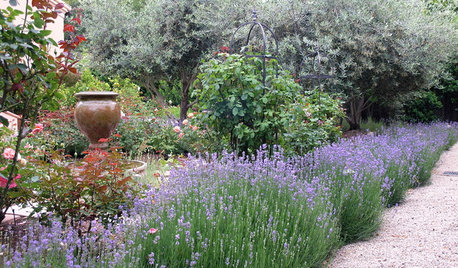Growing in bags (question)
santi_rodriguez
16 years ago
Related Stories

KITCHEN DESIGN9 Questions to Ask When Planning a Kitchen Pantry
Avoid blunders and get the storage space and layout you need by asking these questions before you begin
Full Story
ORGANIZINGPre-Storage Checklist: 10 Questions to Ask Yourself Before You Store
Wait, stop. Do you really need to keep that item you’re about to put into storage?
Full Story
REMODELING GUIDESConsidering a Fixer-Upper? 15 Questions to Ask First
Learn about the hidden costs and treasures of older homes to avoid budget surprises and accidentally tossing valuable features
Full Story
MOVINGHiring a Home Inspector? Ask These 10 Questions
How to make sure the pro who performs your home inspection is properly qualified and insured, so you can protect your big investment
Full Story
EDIBLE GARDENSSummer Crops: How to Grow Tomatoes
Plant tomato seedlings in spring for one of the best tastes of summer, fresh from your backyard
Full Story
FLOWERSHerb Garden Essentials: Grow Your Own Fragrant Lavender
This do-it-all plant is ideal for almost any garden, and its uses are abundant around the home
Full Story
FARM YOUR YARDHow to Grow Vegetables in Containers
Get glorious vegetables and fruits on your patio with a pro’s guidance — including his personal recipe for potting mix
Full Story
EDIBLE GARDENSHow to Grow Your Own Sweet Summer Crops
This guide will help any gardener get started on growing the freshest warm-season veggies and berries for summer
Full Story
GARDENING GUIDESWhat Kind of Roses Should You Grow?
Want to add the beauty of roses to your garden? Find out which ones, from old-fashioned to modern, are right for you
Full Story
FARM YOUR YARD10 Easy Edibles to Grow in Containers
These herbs, vegetables and fruits are just as happy in a pot as they are in the ground
Full StorySponsored



anney
timmy1
Related Discussions
Grow bag/raised bed question
Q
Growing Tomatoes in Grow Bags
Q
Potato grow bag soil addition question
Q
Can I grow a 5 Gallon Topiary cypress in a 20 Gallon grow bag?
Q
santi_rodriguezOriginal Author
squibt
shelbyguy
timmy1
sumilea2008
squibt
coolbythecoast
timmy1
auntnawnee
santi_rodriguezOriginal Author
santi_rodriguezOriginal Author
timmy1
LindaMA
santi_rodriguezOriginal Author
santi_rodriguezOriginal Author
vegomatic
timmy1
santi_rodriguezOriginal Author
timmy1
santi_rodriguezOriginal Author
HoosierCheroKee
jbann23
timmy1
santi_rodriguezOriginal Author
timmy1
bluemater
timmy1
timmy1
reginald_317
timmy1
jbann23
reginald_317
timmy1
bluemater
larryw
bluemater
timmy1